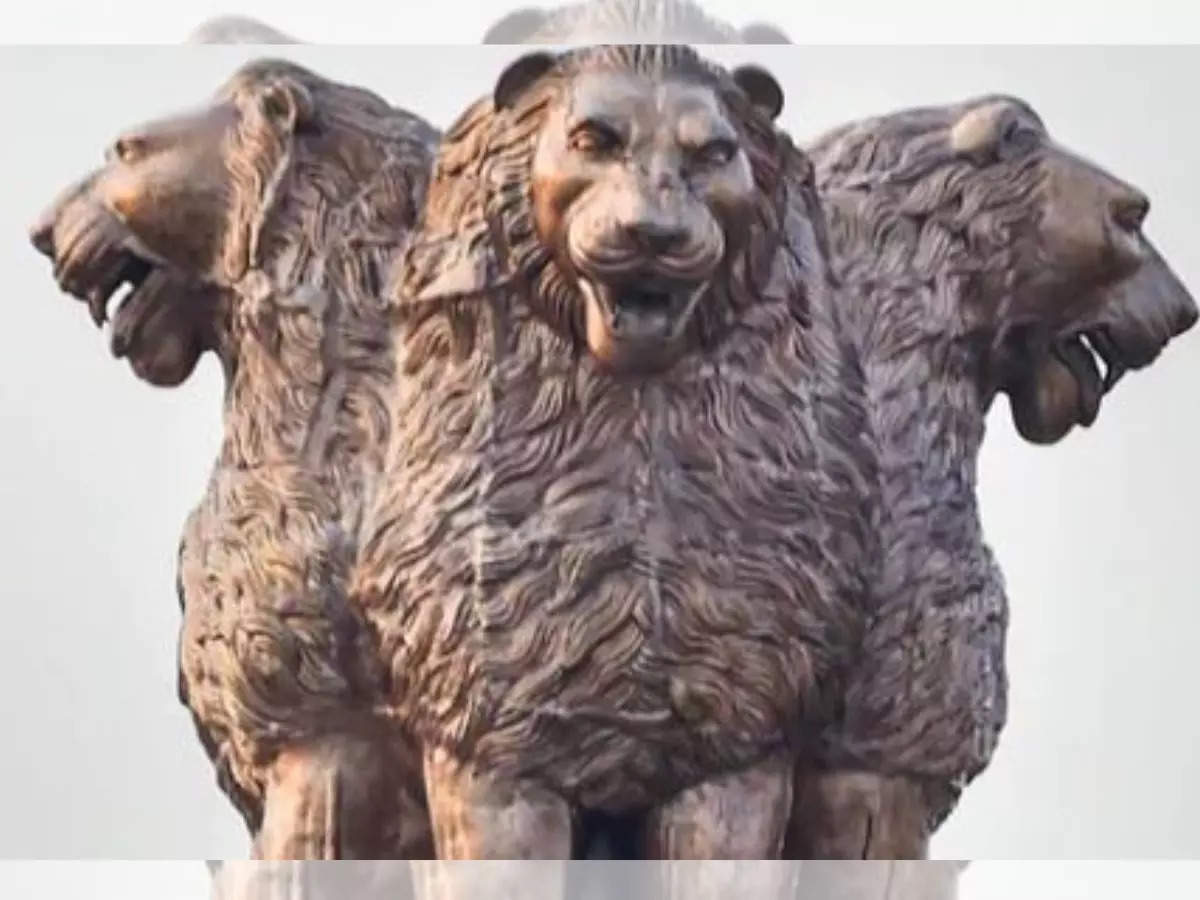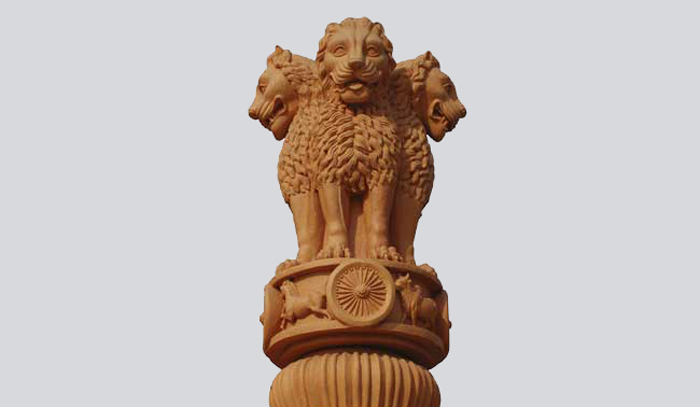NATIONAL EMBLEM

OUTRAGE OVER NEW NATIONAL EMBLEM
The opposition, cutting across party ranks, found the lions on the new 9500 kg emblem angry with their fangs visible, as opposed to the grace and glory of the original. Others found them a distortion of the actual emblem. The Congress party called it a deviation from the original. The new emblem is placed at the top of the central Foyer of the new Parliament building which the government estimates will be ready in time for the winter session this year.
HISTORY OF NATIONAL EMBLEM
- Four Asiatic lions are part of the national emblem with three lions being visible to the naked eye and the fourth one always hidden from general view.
- They are taken from the Sarnath Lion Capital of the Mauryan emperor Ashoka
- The seven feet tall sculptures made of polished sandstone represented courage, power and pride.
- Built in 250 BC to commemorate the first sermon of Gautama Buddha, where he was said to have shared the Four Noble Truths of life, it was mounted on a base of a frieze of smaller sculptures, including a horse ( under fire in the new replica for its tail supposedly resembling that of a dog), a lion, a bull and an elephant moving in a clockwise direction.
- The four animals are said to be guardians of the four directions-north, south, east and west.
- They are separated by a wheel, representing the Dharma chakra of Buddhism, on all four sides
- Each chakra or wheel has 24 spokes
- The chakra was later adopted as part of the national flag. This abacus was mounted on an inverted lotus which is a symbol of Buddhism.
- Chinese traveller Hieun Tsang has left a detailed account of Asoka’s lion pillar in his writing
- The Pillar was part of Ashoka’s plan to spread Buddha’s teachings. After the large-scale massacre in the Battle of Kalinga, Ashoka was shaken and embraced Buddhism with its emphasis on ahimsa. He decided to propagate his principles throughout his empire through the Major and Minor edicts.

WHY DID THE CONSTITUENT ASSEMBLY EMBRACE THE SARNATH PILLAR AS THE NATIONAL EMBLEM
- The Constituent Assembly decided on the Sarnath Pillars as the national emblem. It was felt that the pillar epitomized the power, courage and confidence of the free nation.
- The emblem depicts a two-dimensional sculpture with the words Satyameva Jayate (truth alone triumphs) written below it, taken from the Mundaka Upanishad, written in Devanagri script.
- On January 26, 1950, the Lion Capital of Ashoka at Sarnath officially became the national emblem of India. The Emblem represents the seal of the Republic of India.
- Five students of renowned artist Nandalal Bose created the emblem. Among them were Jagdish Mittal, Kripal Singh Shekhawat; Gauri Bhanja and Dinanath Bhargava. Dinanath was advised by Bose to visit the Kolkata zoo to observe the lions closely to get the exact expression of the majestic animal.
WHAT IS THE CONTROVERSY BEHIND THE LATEST REPLICA?
- The latest replica by Deore and Moses has a steel pillar support of 6500 kgs. The lions many alleged looked too aggressive which amounted to tampering with the original in a hurry to meet the deadline of the Central Vista Project.
- The All India congress committee General Secretary Jairam Ramesh said “To completely change the character and nature of the lions on Ashoka’s Pillar at Sarnath is nothing but a brazen insult to a national symbol.
- Jawhar Sircar, Trinamool Congress MP, questioned the entire process, asking “we seek to know the details of the process of selecting the artist, the brief was given and the cost of the work. This contributed to raising the original estimated cost of Rs 975 cr to the currently estimated cost of rs 1200 cr? Did the proposal to install this sculpture receive sanction from the Delhi Urban Art Commission and the Heritage Conservation Committee, mandated by the Supreme Court order of Jan 6, 2021, regarding the New Parliament Building?
- The designers countered the criticism about the lions looking aggressive by insisting that it was a matter of perspective, and claimed that the new emblem is a huge structure meant to be appreciated from a distance. The original structure was 1.6 metres tall whereas the new depiction is 6.5 meters high. Also, the original Lion Capital was at the ground level while the latest depiction is at a height of 33 metres from the ground.




